Jump-Up
byThere’s probably no other drum and bass subgenre that provokes as much controversy and discussion as this one. Oldskul
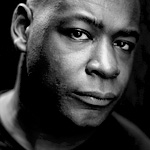
A Guy Called Gerald
Judging by the musical structure,
In 1994, the duo Dead Dred released the landmark record Dred bass, and so it was done. The track that starts with soft keyboard melodies is interrupted by several gunshots and the rapidly stoned soft rhythm begins. But the most important thing is the bass. Dead Dred played the bass line backwards, which caused everyone’s euphoria. At the time, it was a really fresh idea that opened up great creative opportunities.
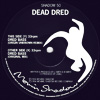
Dead Dred — Dred bass 1994
From Dred bass single, Moving Shadow
Andy C, who did so much for jungle and drum and bass and would appear many times in this article, recalled: “Dred bass has an interesting story behind it. I was out with Rob Playford—the boss of Moving Shadow Records—down at AWOL in 1994. It was about 6am and Kenny Ken came on. Dred bass was Kenny’s first tune, and it absolutely blew the place to bits. It was one of those moments that you don’t get so much nowadays, where you feel ‘I have never heard anything like that before.’ The atmosphere that the intro set up, and the reverse bass! Wow! It must have been on the first tunes ever to use that now-classic reverse-bass sound. Back in 1994 it was like, WTF?”

JB — ½ of Dead Dred duo
“Low and behold, later that week Rob Playford called me up and said ‘I have signed it—I have signed Dred bass to Moving shadow!’ I was like ‘you lucky bastard!’ jokingly. But a week later, Rob rang us up and said that he wanted a remix. It was amazing—we felt privileged, but I have to admit that it was a daunting task.”
“The funny thing about Dred bass is that it didn’t really drop at first", says JB. "We did the tune, gave the plate to a few local guys and it didn’t really take off at all. We were going to scrap it, but decided to give it a chance and see how it did. It ended up, selling 47 000 copies on Moving Shadow.”
It seems that the success and the new idea of Dred bass pushed other musicians if not to repeat the success of the track, then to go further. The duo created a fundamentally new kind of bass line, which became an inseparable attribute and a distinctive feature of
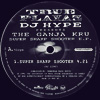
DJ Zinc — Super sharp shooter 1996
From Super sharp shooter EP, Parousia

DJ Zinc
The original Shooter was written in 1995 and was repeatedly re-released and re-mastered until the final version was created and the video with a black sprinter in a suit was made for it. (The success of the video was so phenomenal that it even got on MTV Europe.) It’s believed that it was DJ Zinc who set the fashion of using sampled rhyming, focusing his attention on hip hop (instead of ragga). The beginning of the track, where its title is spelled, for example, is a sample from
If you remember the theory of the genre, UK jungle was the answer to hip hop that appeared in the USA. And now,as you can imagine—the two genres went together perfectly. But it’s not really surprising—both are arrogantly defiant. As was said before, one of the features of
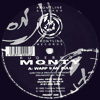
Rude Bwoy Monty — Warp 9 Mr. Zulu 1995
From Warp 9 Mr. Zulu / Summer sumting single, Frontline Records
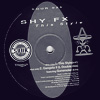
Shy FX — This style 1995
From This style single, SOUR

DJ Hype
After Shooter, another anthem was written, but this time a semi-underground one. DJ Zinc created a bootleg remix of one of the best-known songs by the Fugees, Ready or Not. Officially the remix, also called Fugees or Not, was never released but just went from hand to hand, cut many times into self-made records with a white label sticker and sometimes got onto different compilations such as Jungle Anthems. There is some confusion about who’s the author of the remix: some sources write that it was made by Hype, other says Zinc created it. There are also those who reconcile them with ampersand by writing ‘Hype & Zinc remix’. According to DJ Zinc himself he was the author of the remix while Hype helped him with the bass line.
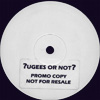
DJ Zinc vs. Fugees — Ready or not 1996
Vocal Lauryn Hill
Remixed by Benjamin Pettit
The veteran of jungle and UK hardcore scene doesn’t think that hip hop has some sort of special place in jungle and drum and bass and at the same time, hip hop doesn’t tend to use drum and bass elements everywhere. But for Hype this was the essence of UK breakbeat rhythms. He believes that drum and bass can complete anything but it doesn’t intersect with hip hop as much as with other genres. And this is the beauty of drum and bass—it can be mixed with anything you want: house, jazz, techno, ragga or hip hop. However, Hype admits that drum and bass got inside other music genres.
On the wave of unbelievable popularity, Hype closed Ganja Records and started a new label True Playaz as if talking about his friends (Zinc, Pascal, Hype) in the third person plural. Hype talked about changing musical directions, his desire to concentrate on jungle experiments; at the same time he wanted to make things for the masses without becoming an assembly line. The only things that didn’t change were a ganja leaf on the True Playaz logo and the possibility of working separately as well as in the creative group Ganja Cru. Ganja is marijuana, more precisely it means fibres of cannabis stem in Sanskrit. (The word jungle, by the way also comes from Sanskrit). It’s an homage to old romantic ragga times. The previous releases of Ganja Records had huge leaves in the middle of the vinyl disc. Now the times have changed and so did the design, which became more discreet. (There is a story that in a few countries there were problems with the distribution of releases because of the marijuana leaf on the Ganja Records logo. In True Playaz it’s covered with a huge label name.)
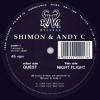
Shimon & Andy C. — Night flight 1996
From Quest / Night flight single, RAM Records
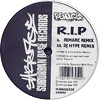
Remarc — R.I.P (DJ Hype remix) 1995
Remixed by Kevin Ford
From R.I.P (Remixes) single, Suburban Base Records
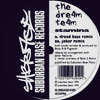
The Dream Team — Stamina (Dred Bass remix) 1995
Remixed by Jason Ball, Lee Smith
From Stamina (Remixes) single, Suburban Base Records

Aphrodite
Another important and prominent person in
He felt that these two genres completed each other but putting them together was never an easy task. The only problem is that it’s difficult for hip hop artists to rap to a furiously fast rhythm. This is why Gavin recommends not torturing MCs but instead letting them rap in a usual rhythm. The end result is normal hip hop, which is later put in the jungle environment.
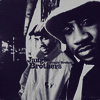
Jungle Brothers — Jungle brother (Urban Takeover remix) 1997
Remixed by Gavin King, Michael Hearn
From Jungle brother single, Gee Street
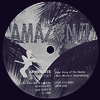
Amazon II — King of the beats 1996
From King of the beats / Music’s hypnotizing single, Aphrodite Recordings
Aphrodite was particularly interesting in Human Traffic, a film from reckless screenwriter and director Justin Kerrigan. In the scene in the musical shop, there’s a dialogue between Koop, the seller in a red Junglist Movement t-shirt and two customers who are, judging by their clothes, true junglists (the one in the silver coat is Kerrigan himself):
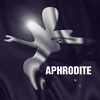
Aphrodite — Stalker 1999
From Aphrodite album, Aphrodite Recordings
But this is already a postscript—tracks by the last players of the subgenre. By this time, jungle had left the scene a long time ago and, according to some listeners, had isolated itself by staying in the same place—there was nothing there apart from mixing jungle and hip hop. The golden time of
The careless time of oldskul
Nu jump-up
In September 2001, the Ram Records label released a record that turned the drum and bass scene upside down. Listeners have different opinions: there are those who hate it and those who truly adore it. Those who are indifferent almost don’t exist. Body rock increased the rumours and heavy talks among junglists about the imminent death of drum and bass or at least its fast degradation. It was strongly despised by purists and orthodoxies—the creation of Shimon and Andy C was so innovatively frightening. Frankly, there were reasons for the concerns of conservatives: firstly, Body rock resurrected an already forgotten wobble bass and not in its best (meaning serious) form. And secondly, the rhythm of the track wasn’t like anything previously created in drum and bass or jungle: it was based on the four-to-the-floor rhythm. So, it wasn’t two hits on every beat like in 2-step introduced to drum and bass by Alex Reece but four—before the release of Body rock making a steady rhythm in the UK breakbeat environment seemed impossible savagery.

Andy C.
“That record was literally stumbled upon”,—Andy C recalls. “Ant (Andy’s partner in the Original Unknown duo) had been doing some mad things with drum rolls on the computer, and out of that came the weird beats. A year later (in the studio) at about four in the morning, Shimon and me kind of rediscovered that vibe. We were working on Orient express at the time, but suddenly I was like ‘You know what Shim, let’s save this mix and go onto something else!’ This is at 4 am. So we loaded up that beat which we had made a year before. Four hours later, it was finished.”

Shimon & Andy C. — Body rock 2001
From Body rock single, RAM Records
“That tune was the one that took everybody by surprise,” stated Andy. “To sum up, I remember playing Body rock as my last tune at Homelands, a few years ago in 2001. Roni Size came up and rewound it two or three times. It was the last set of the night. I remember seeing daylight outside, and seeing many thousands of people going nuts. That was a beautiful memory—that will live me. […] I first played it out at Bar Rumba, the night after the Knowledge Awards. I had it on CD. I started and finished my set with it, and people were just running up going WTF. So then it was like, Ok, it work.”

Shimon
“We have no idea what would happen with Body rock”,—laughs Shimon. “We just found beat that we’d done ages ago from an old tune and thought it’d be mad to use it. It’s actually a very simple tune but we didn’t think people would get it. We played it and the reaction was good so we stuck it out and it’s been great as it’s created a lot of space for us not to operate it. Generally now you can get away spinning a bit more anyway and it’s good that the scene generally has gotten away from the hardcore sound and that people are branching out more. It’s a right as a producer and a human being to be able to do that. It’s a right to be able to express yourself how you want”.
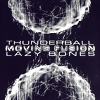
Moving Fusion — Lazy bones 2001
From Thunderball / Lazy bones single, RAM Records
The support of colleges came quickly (as well as a crowd of
“That tune was one of the most exciting things to happen in 2001," enthuses Bad Company’s Fresh. “Everything else that’s going on an all the other directions that have been happening are all good but they’re malgamations of things that have been done before. Body rock has opened people’s minds to using swing, which for a long time people have written off. There may end up being a million Body rocks’s around next year, but as long as it serves as a stepping stone to even more experimentation that’s got to be a good thing.” In an attempt to control the wobbling bass, a new term ‘clownstep’ was created. Being a feature of the Body rock track and all its analogous features, it quickly became offensive, reflecting the most vulgar and plain taste of its listeners.
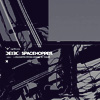
Bad Company — Spacehopper 2002
From Spacehopper single, RAM Records

Keaton — the creator of clownstep term
The term clownstep is closely linked to the former shelter of Bad Company fans, which now became the biggest international drum and bass community Dogs on Acid. The legend says that the word clownstep was invented by the distinguished musician Keaton, popular in these circles. In one interview he recalled how it happened in detail: “When Body rock dropped, with the way that they programmed those drums with the kick on the three giving it a swing beat kind of feel, and I saw how ravers would dance around to it, I could just imagine, and don’t get me wrong I liked the tune, a load of clowns dancing around to it! So I was like yeah clown step! Since then me and my crew started using the term, and then Dylan who posts on Dogs On Acid quite a bit started using it, and ever since it’s just grown and grown. It really hit me when I was in Los Angeles and some girl said to me, ?have you heard that new clown step thing? I was just like what madness it’s gone worldwide! To be honest the whole thing, just gives me jokes. The term was never meant to be malicious; it was just my way of describing that beat pattern.”
On the night of Christmas Eve, 2001, Dylan wrote in the legendary topic on the Dogs on Acid forum, saying that listening to Body Rock and similar songs made him see a clown jumping in the circus with a klaxon in his hands. The public quickly responded with support. At noon on the same December 24, Dylan had published a quotation from Fresh, who was creating Spacehopper: “That’s the clownstep edits done, now i'm gonna add some twisted bass with my b-line horn... honk honk.”
Clownstep emoji
by icarerecordings
A year later, when the clownstep movement started to burn fully, the following question was asked on the same forum: does anyone want to create a killer-clown emoji? The artist was found immediately and he created the first version of the clownstep emoji with a party hat and a red wig. Then he was asked to add long clown shoes and this is how the legendary picture appeared and spread around the world to annoy all the haters, being the last argument in favour of music.

DJ Hazard — Rubber chicken 2003
From No more games EP, True Playaz
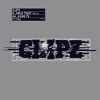
Clipz — Kung Fu 2005
From Hold tight / Kung Fu single, Full Cycle Records

Clipz
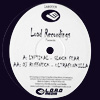
Lyptikal — Glock fear 2007
From Glock fear / Ultrafunkilla single, Load Recordings
The mass hysteria in the drum and bass community reached such an extent that the forum Dogs on Acid banned the term clownstep, confirming its status as offensive rather than describing the rhythmical figure. Moreover, now when there was such a term, the musicians who understood the etymology literally started making tracks where they pushed the sound to the extreme—now it wasn’t just about the drums and the wobbling bass line; there were also samples from cartoons, lines from characters, a squealing bass, sirens and a melody with really comical intonation. Listening to it creates a strong feeling of insane madness and something diabolic (clowns are the offspring of hell; you can actually get coulrophobia). As many rightly notice, clownstep is the happy hardcore of drum and bass.
The early stage of clownstep gave impetus to the development of nu skool jump-up. In 2003, the glorious subgenre, whose first version peaked in the mid-90s, came back. However, it should be noted that
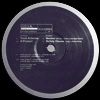
Total Science — Nosher (Baron’s I know a little spot remix) 2003
Remixed by Piers Bailey
From Nosher (Baron VIP) / Safety Clause (Tango & Ratty remix) single, C.I.A

Distorted Minds — T-10 2003
Perfomed by Jermaine Jacobs
From T-10 / The tenth planet single, Kaos Recordings
Perhaps if clownstep hadn’t mutated into music for children’s parties, it would have been the same as

Pendulum

Pendulum — Vault 2003
From Kingz of the rollers EP. Volume three compilation, 31 Recordings
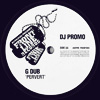
Generation Dub — Pervert 2006
From Give it to me / Pervert single, Frontline Records
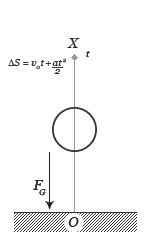
Anti-science
There has been a long discussion on what should be considered as clownstep and what should be considered as
Adam F, who’s known to many people from the artcore times, after releasing A brand new funk, decided to move to a completely different side of music. He crossed the ocean, met American hip hop elites and soon became one of the musicians to whom the rappers trusted their rhymings. In 2002, he opened a new label, Kaos Recordings. Kaos came from all the disorder of thoughts in his mind and of actions in his life in the previous few years during which he had created the new album Kaos: Anti-acoustic warfare that had no hint of his London background. In the same year, he gave all the material to the mercy of the UK breakbeat monsters, which led to the remix album Drum & Bass Warfare, where the combination of contemporary drum and bass and contemporary hip hop sounds especially good.
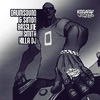
Drumsound & Simon ‘Bassline’ Smith — Killa DJ 2005
From Killa DJ / Big tings single, Breakbeat Kaos
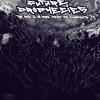
Future Prophecies — Dreadlock VIP 2007
From The roof is on fire / Dreadlock VIP single, Breakbeat Kaos

DJ Fresh
After DJ Fresh left Bad Company, Adam and himself created out of the former Kaos a label called Breakbeat Kaos, which soon became the leader in terms of producing drum and bass of good quality and thanks to the huge sales he introduced the style to the widest masses. (New wave of drum and bass development.) Originally Australian trio Pendulum in 2003 became famous with their nu
In drum and bass circles, many are concerned that there is a subgenre with an unhealthy cheerfulness, however clownstep, as with any new popular phenomenon, after a period of leadership, started losing its popularity. And nu
Music & stories
12″ pages on social networks and weekly materials that you can’t find on the website. Cool electronic music videos, tune of the week, histories behind albums and FridayFive tracks. Join!